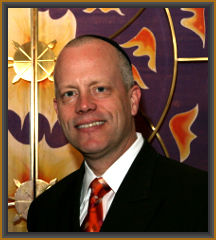
 |
September 24, 2021 (18 Tishre 5782) Yizkor, Shmini Atzeret, and the Changing You Dear Friends, I hope you are all enjoying the holiday season. We look forward to seeing you in-person, or alternatively on Zoom, this upcoming Shabbat, for Chol Hamoed (intermediate days) Sukkoth services. I have always been struck by the irony of reciting Yizkor twice, in a brief two-week span, during the fall Jewish calendar. This year, having lost two members of my family, my beloved mother and sister, I have struggled even more with the anguish of “forcing” people to confront issues of mortality and loss of life so repeatedly. In fact, in part due to Covid, the nature of the mourning process has been, for many, compounded by the inability to hold a loved-one’s hand, be present at funerals, and recite Kaddish during Shivas. These have indeed been trying times. At this time of year, I find myself asking, “Is it not enough to do the memorial prayers once?” and “Why do we circle back so shortly after Yom Kippur and recite them again?” In fact, from where does this important prayer service even come? Yizkor is predicated on two important Jewish concepts: the immortality of the soul and the power of collective remembrance of communal trauma. Many sources share that although the deceased can no longer perform mitzvot, they can benefit from prayers, acts of charity, and other good deeds that their relatives perform on their behalf. The roots of Yizkor are found in the Midrash Tanchuma Parashat Ha’azinu, where it cites Deuteronomy 21:8, “Atone for Your people, Israel, whom You have redeemed.” We are told that the first part of the verse refers to the living of Israel, while the second part refers the deceased. The Midrash continues, “Therefore, our practice is to remember the deceased on Yom Kippur by pledging charity on their behalf.” We are then told to consider that our charity or acts of lovingkindness support the Neshama (souls) of the departed causing potentially the ascension of the Neshama through the various levels of heaven. From a communal standpoint, we know that during the Middle Ages, the Crusades led to brutal persecution of Jews, and many were massacred on blood libel charges around the holiday of Pesach. Many Rishonim (early rabbinic authorities), such as Rashi and the Maharil, encouraged communities to adopt the custom of reading aloud the names of those martyred during Yizkor. While the historical emergence of the Yizkor service remains clouded in the murky mists of the early medieval period, scholars tend to agree that the liturgical practice of memorializing the dead began in the Rhineland following the First Crusade (c. 1096 CE), as a vehicle of collective remembrance. Other communities then similarly adopted the practice at the end of Sukkoth and on Shavuoth, also in response to local tragedies. Returning to the original question, I believe that the two identical recitations that are part of our Ashkenazic liturgical tradition, may reflect two different potentialities in confronting loss. On Yom Kippur we chant Mi Yichyeh U’Mi Yamut (who will live and who will die) during the Unetaneh Tokef. The mood is somber and foreboding. When reciting the Yizkor for this first holiday, perhaps we consider our own shortcomings, the inevitable struggles in relationships, the precariousness of connections, and even imagine how we could have acted better or differently. In contrast, at the end of Sukkoth on Shmini Atzeret, the mood is one of thanksgiving, happiness, and gratitude. When reciting Yizkor on this second holiday, perhaps we are now in a mood to reflect prominently on the joys, pleasures, and satisfaction of those very same relationships. In joy, we remember birthdays, celebrations, and the holiest and happiest moments of those bonds. So, while the texts may not change, perhaps it is the power of the collective consciousness which causes us to change in approach and attitude over the course of these few weeks. May the memories of all our loved ones continue to be a blessing and may the Torah learning and community building that we embrace, impact not only the souls of our loved ones, but also who we are as a compassionate people, and how we, as a Kehillah Kedosha (sacred community), can in gratitude and joy, bring the world to its ultimate redemption. Shabbat Shalom and Chag Sameach, Rabbi Eric L. Wasser, EdD
|